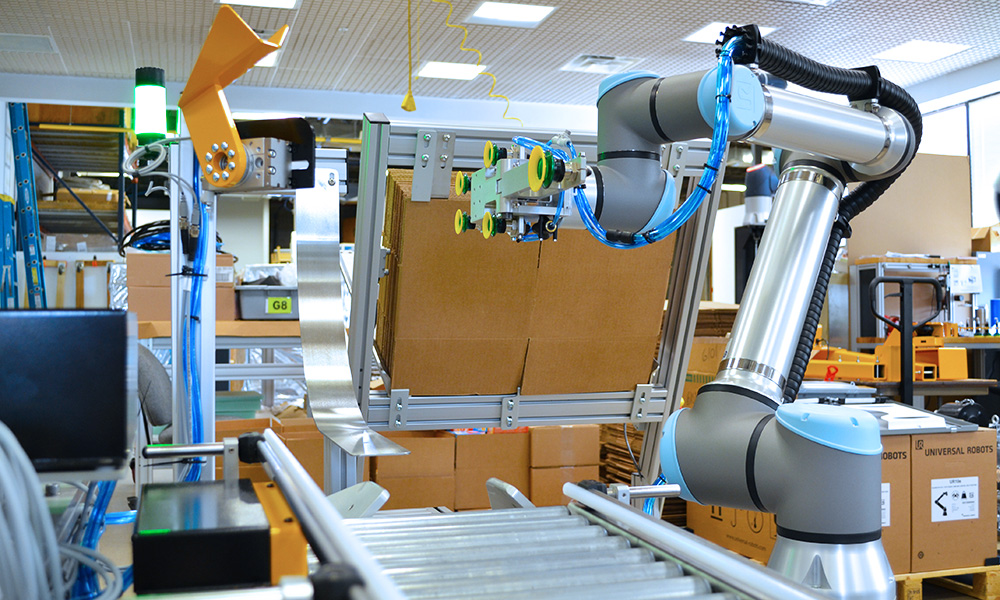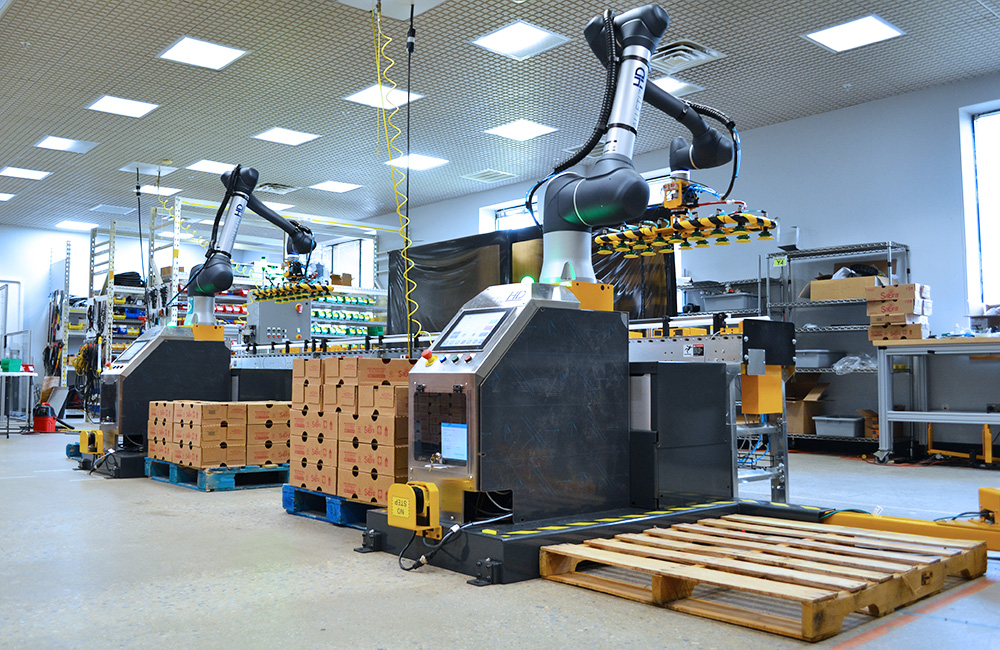The integration of robotic systems in the pharmaceutical industry has transitioned from a futuristic vision to an essential, current-day solution for a wide array of operational challenges. As an influential figure in this sector, you’re likely acutely aware of the escalating labor demands and the consequent difficulties in meeting the ever-growing market needs. Robotic system integration emerges as a crucial strategy in this landscape, offering a powerful tool to enhance efficiency and productivity.
This technology is not just about automation; it’s about redefining the way pharmaceutical manufacturing operates. By embracing robotic integration, you’re not just keeping pace with industry trends; you’re setting a new standard in manufacturing excellence. This strategic move not only addresses the immediate need for labor optimization but also positions your business at the forefront of technological innovation, ensuring resilience and competitiveness in a rapidly evolving market.
The Growing Need for Automation in Pharma Manufacturing
Did you know that as of 2023, there were 2,443 brand-name pharma manufacturing businesses in the US, marking a 4.5% increase from the previous year? This growth underscores the escalating demand for pharmaceuticals and the corresponding need for efficient production processes. Moreover, with over 800,000 people employed in US biopharmaceuticals and a significant 8% job vacancy rate, as evidenced by 61,000 unfilled positions on LinkedIn, the industry faces a critical labor challenge.
Why Robotic System Integration?
Robotic systems integrators and automation integrators play a pivotal role in resolving labor challenges. The essence of robotic systems integration lies in its capacity to seamlessly blend advanced automated technology with current manufacturing processes.
This strategic fusion is crucial for bridging the widening gap between escalating labor demands and the imperative for enhanced production capabilities. By integrating sophisticated robotics, manufacturers not only streamline operations but also usher in an era of heightened efficiency and productivity, ensuring that the industry remains agile and responsive to the ever-evolving market needs.
1. Time Efficiency and Market Readiness
The integration of pharmaceutical robots marks a revolutionary shift in the drug development cycle. By employing these advanced robotic systems, the journey from laboratory development to market availability is significantly expedited. This swift progression is not just about efficiency; it’s a critical factor in a healthcare context where every moment counts. Accelerating the delivery of essential medications to the market directly translates to faster access for patients, thereby playing a pivotal role in saving lives in situations where time is of the essence.
2. Scaling Up Production
As your pharmaceutical business flourishes, scaling up production efficiently becomes a strategic imperative. Embracing factory automation, especially with the integration of pharma robots, offers a sustainable solution to this challenge. These sophisticated robotic systems enable a significant increase in production capacity, without the proportional rise in labor costs and resource allocation typically associated with expansion. This approach not only optimizes operational efficiency but also ensures that your business can grow and meet increasing market demands cost-effectively.
3. Lowering Labor Costs
Robotic systems integration stands as a key solution in significantly lowering labor costs within the pharmaceutical industry. The advent of automation translates to a reduced reliance on manual labor, streamlining various processes from production to packaging. This shift not only optimizes the workforce but also curtails expenses associated with extensive human resource management, including training, benefits, and wages.
By investing in robotics, companies can reallocate their financial resources towards innovation and development, thereby enhancing overall productivity and competitiveness in the market, all while maintaining a leaner and more efficient operational structure.
4. Enhancing Health and Safety
Integrating robots into pharmaceutical manufacturing processes marks a significant stride in enhancing workplace health and safety. Robots, adept at handling hazardous materials and executing repetitive tasks, drastically reduce the risk of human exposure to potentially dangerous conditions. This minimization of direct human interaction in high-risk areas significantly lowers the incidence of workplace accidents and related injuries.
Furthermore, robots bring precision and consistency to tasks that might pose ergonomic challenges to human workers, thereby fostering a safer and healthier work environment. This not only protects employees but also upholds the company’s commitment to maintaining high safety standards, crucial in the pharmaceutical field.
Areas of Robotic Process Automation (RPA) Deployment

Many areas within your business could benefit from Robotic Process Automation (RPA), chief among them being the opportunity to automate end-line production tasks like packaging and palletizing. While our team is here to help you evaluate if robotic system integration is right for your facility, there are other areas of deployment you may consider.
Compliance with Regulations
In the rigorously controlled pharmaceutical industry, compliance with regulations is paramount. RPA serves as a critical tool in ensuring this compliance. By automating data entry, RPA significantly reduces the likelihood of manual errors in record-keeping, a key element in regulatory adherence. This automation not only streamlines the documentation process but also guarantees that all regulatory standards are met consistently, thereby safeguarding the integrity and reliability of pharmaceutical operations.
Supply Chain and Inventory Management
RPA revolutionizes supply chain and inventory management in the pharmaceutical sector. By automating crucial tasks like order processing and inventory tracking, RPA ensures a seamless and efficient supply chain operation. This automation leads to more accurate and timely order fulfillment, while simultaneously maintaining optimal inventory levels. The result is a streamlined, error-free supply chain system that effectively supports the dynamic demands of pharmaceutical manufacturing and distribution.
Reporting Adverse Events
In the realm of pharmaceuticals, the efficient reporting of adverse events is critical for patient safety and regulatory compliance. Automated systems excel in this area by meticulously gathering, processing, and reporting such events. This automation ensures that all necessary information about adverse reactions is accurately captured and promptly relayed to the relevant regulatory authorities. Consequently, this leads to quicker responses to potential safety issues, thereby enhancing patient care and safety standards.
Financial Process Improvement
Robotic Process Automation plays a transformative role in the financial operations of pharmaceutical companies. By assisting in key financial processes such as purchasing, vendor invoice processing, and quarterly reconciliation, RPA significantly enhances operational efficiency. This automation streamlines financial transactions and reporting, ensuring accuracy and consistency. It also frees up valuable time and resources, allowing the finance department to focus on more strategic tasks and contributing to the overall financial health of the organization.
Automate Your Pharmaceutical Manufacturing Facility
The integration of robotic system integration in pharmaceutical manufacturing is not just a trend; it’s a strategic move towards a more efficient, cost-effective, and safe production process. To put it simply, automation is the future of labor in manufacturing, and the pharmaceutical industry is no exception to that rule.
By embracing this technology, you are not only addressing current labor challenges but also positioning your business for future growth and success in an increasingly competitive market. Remember, the future of pharma manufacturing lies in the smart integration of technology, where robots and humans work in synergy to achieve the best outcomes. To learn more about how to integrate robotic systems into your pharmaceutical manufacturing facility, contact our collaborative robotics experts today!

